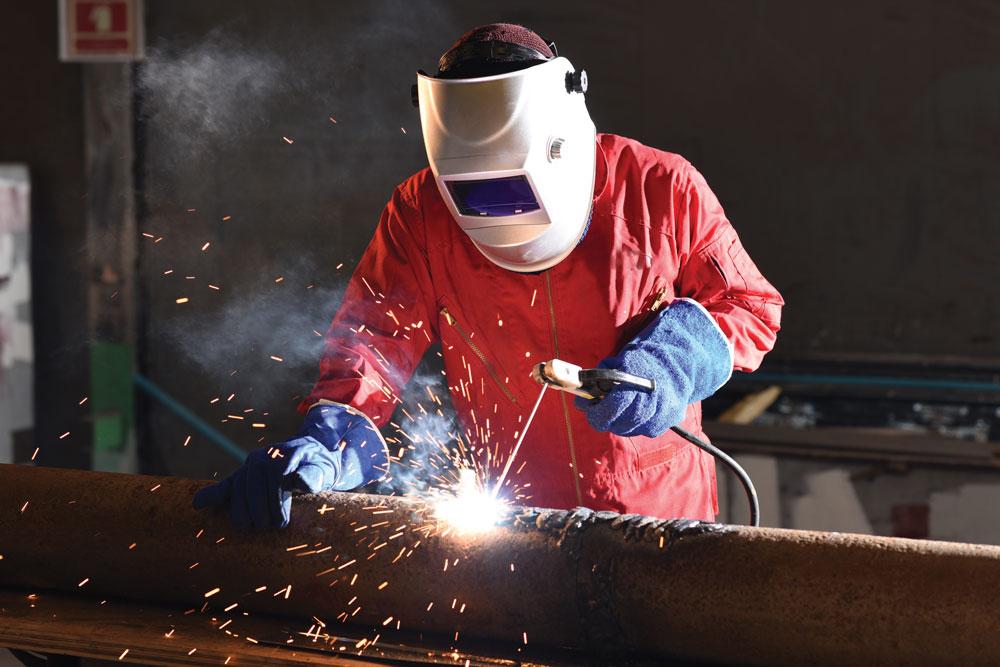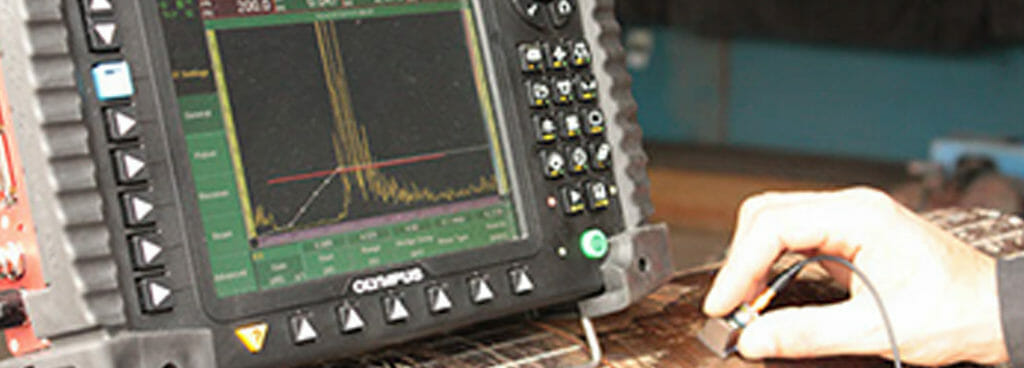The Ultimate Guide to Welding Inspection Racine for Industrial Standards
The Ultimate Guide to Welding Inspection Racine for Industrial Standards
Blog Article
Ingenious Strategies to Fillet Weld Inspection and Testing: Enhancing Weld Quality and Compliance Standards
In the realm of welding, the high quality and stability of fillet welds play a crucial role in making certain the architectural strength and dependability of different industrial components. With the consistent drive for improved efficiency and conformity with rigorous requirements, the exploration of cutting-edge techniques to fillet weld evaluation and screening has become important.
Advanced Non-Destructive Testing Approaches
Using modern innovations, advanced non-destructive screening techniques play a critical function in guaranteeing the honesty and quality of fillet welds. These techniques, such as phased range ultrasonic testing (PAUT) and magnetic particle testing (MPT), offer thorough understandings right into the weld's interior framework without causing any type of damage to the product. PAUT, for circumstances, utilizes several ultrasonic aspects to evaluate the weld from various angles, supplying a thorough visualization of prospective flaws like absence of fusion or fractures.
By employing these advanced non-destructive screening strategies, weld assessors can properly examine the top quality of fillet welds, ensuring compliance with market criteria and laws. The capability to discover defects early on not only enhances weld high quality however additionally prevents costly rework or failures in structural integrity, highlighting the significance of these cutting-edge screening approaches in welding inspections.
Robotics and Automation in Evaluation
The combination of robotics and automation has reinvented the assessment procedure for fillet welds, improving effectiveness and accuracy in quality analysis. Robotics provide accurate control and repeatability in inspecting welds, making certain trustworthy and constant results. Automated systems can be set to comply with specific assessment paths, making certain extensive coverage of welds and minimizing the risk of human mistake.
Robotic assessment systems equipped with sophisticated sensors can find and measure weld functions with high precision, supplying detailed data for evaluation. These systems can identify flaws such as splits, lack of combination, and porosity, making it possible for timely rehabilitative activities to be taken. Furthermore, robotics and automation allow for real-time information collection and analysis, giving instant responses to drivers and helping with quick decision-making procedures.
Furthermore, making use of robotics and automation in fillet weld assessment boosts overall efficiency by reducing assessment times and raising evaluation throughput. By simplifying the inspection process, makers can ensure weld quality and compliance standards are satisfied effectively, eventually bring about set you back financial savings and boosted product quality.
Using Artificial Knowledge for Evaluation
Fabricated knowledge plays a crucial duty in improving the effectiveness and accuracy of evaluation in fillet weld examination processes. AI formulas can quickly process large amounts of data from weld evaluations, spotting defects or incongruities that might be testing to determine with the naked eye - Welding Inspection Racine.
Furthermore, AI systems can gain from past evaluation information, continuously improving their ability to recognize prospective defects and deviations in fillet welds. This flexible discovering ability enhances the overall high quality control process, lowering the possibility of human error and making certain that welds meet the called for standards. By incorporating expert system right into fillet weld evaluation, markets can attain greater degrees of effectiveness, uniformity, and conformity in their inspection methods.
Portable Devices for On-Site Evaluation
 Enhancing area examination efficiency, the adoption of mobile devices transforms on-site analysis processes for fillet welds. These devices use adaptability and convenience, allowing examiners to perform thorough evaluations in different areas, consisting of remote or challenging atmospheres. Portable tools such as ultrasonic testing gadgets, magnetic bit assessment tools, and electronic radiography systems give real-time information and high-resolution you could try these out imaging capacities, enabling quick decision-making and Get More Info instant comments on weld top quality.
Enhancing area examination efficiency, the adoption of mobile devices transforms on-site analysis processes for fillet welds. These devices use adaptability and convenience, allowing examiners to perform thorough evaluations in different areas, consisting of remote or challenging atmospheres. Portable tools such as ultrasonic testing gadgets, magnetic bit assessment tools, and electronic radiography systems give real-time information and high-resolution you could try these out imaging capacities, enabling quick decision-making and Get More Info instant comments on weld top quality.One considerable benefit of portable tools is their capacity to enhance inspection treatments, lowering downtime and boosting overall efficiency. Inspectors can conveniently transport these tools to various work sites, getting rid of the requirement for transferring hefty machinery or parts to off-site facilities. Furthermore, the transportability of these tools advertises cost-effectiveness by reducing transportation expenses and speeding up assessment timelines.
In addition, using mobile devices for on-site examination advertises proactive high quality control steps, as inspectors can immediately recognize and attend to any kind of possible welding problems or inconsistencies. By integrating these ingenious technologies into on-site inspection techniques, welding specialists can make certain compliance with market requirements and boost weld top quality, eventually bring about enhanced architectural stability and safety and security in various welding applications.
Combination of Information Administration Equipment
Having maximized on-site inspection procedures with the usage of portable devices, the following stage entails the smooth integration of information administration systems to even more enhance efficiency and data evaluation abilities in fillet weld inspection and screening. Welding Inspection Racine. By integrating information monitoring systems right into the examination procedure, organizations can streamline information collection, storage space, and evaluation. This combination allows for real-time tracking of weld quality, instant recognition of defects, and timely decision-making to correct any concerns that may develop during the examination procedure
Data monitoring systems play an important duty in centralizing examination data, assisting in very easy gain access to for accredited employees, and guaranteeing information stability and safety. Through the assimilation of these systems, inspectors can produce thorough reports, track historical data for trend evaluation, and boost total process performance. In addition, the combination of data management systems allows seamless interaction in between different stakeholders associated with the assessment procedure, cultivating cooperation and boosting overall quality assurance procedures. Ultimately, the integration of data monitoring systems offers to More hints boost the requirements of fillet weld evaluation and testing, guaranteeing conformity with sector regulations and boosting weld top quality.
Conclusion
Finally, cutting-edge strategies to fillet weld inspection and screening have actually substantially boosted weld top quality and conformity requirements. Advanced non-destructive testing techniques, robotics, automation, man-made knowledge, portable devices, and information monitoring systems have actually changed the method weld inspections are performed. By using these technologies, sectors can make sure that welds fulfill the called for high quality standards and guidelines, ultimately enhancing overall effectiveness and safety and security in welding procedures.

By utilizing these advanced non-destructive testing methods, weld assessors can accurately examine the top quality of fillet welds, making sure compliance with market criteria and regulations. Mobile devices such as ultrasonic testing gadgets, magnetic fragment evaluation tools, and electronic radiography systems offer real-time information and high-resolution imaging abilities, enabling quick decision-making and immediate feedback on weld quality.
Having optimized on-site inspection processes through the use of mobile devices, the following stage includes the smooth assimilation of information management systems to further boost efficiency and information evaluation abilities in fillet weld evaluation and testing (Welding Inspection Racine). Ultimately, the assimilation of data administration systems serves to raise the standards of fillet weld inspection and screening, making certain compliance with industry laws and enhancing weld high quality
 In verdict, cutting-edge approaches to fillet weld examination and testing have significantly enhanced weld quality and compliance standards.
In verdict, cutting-edge approaches to fillet weld examination and testing have significantly enhanced weld quality and compliance standards.Report this page